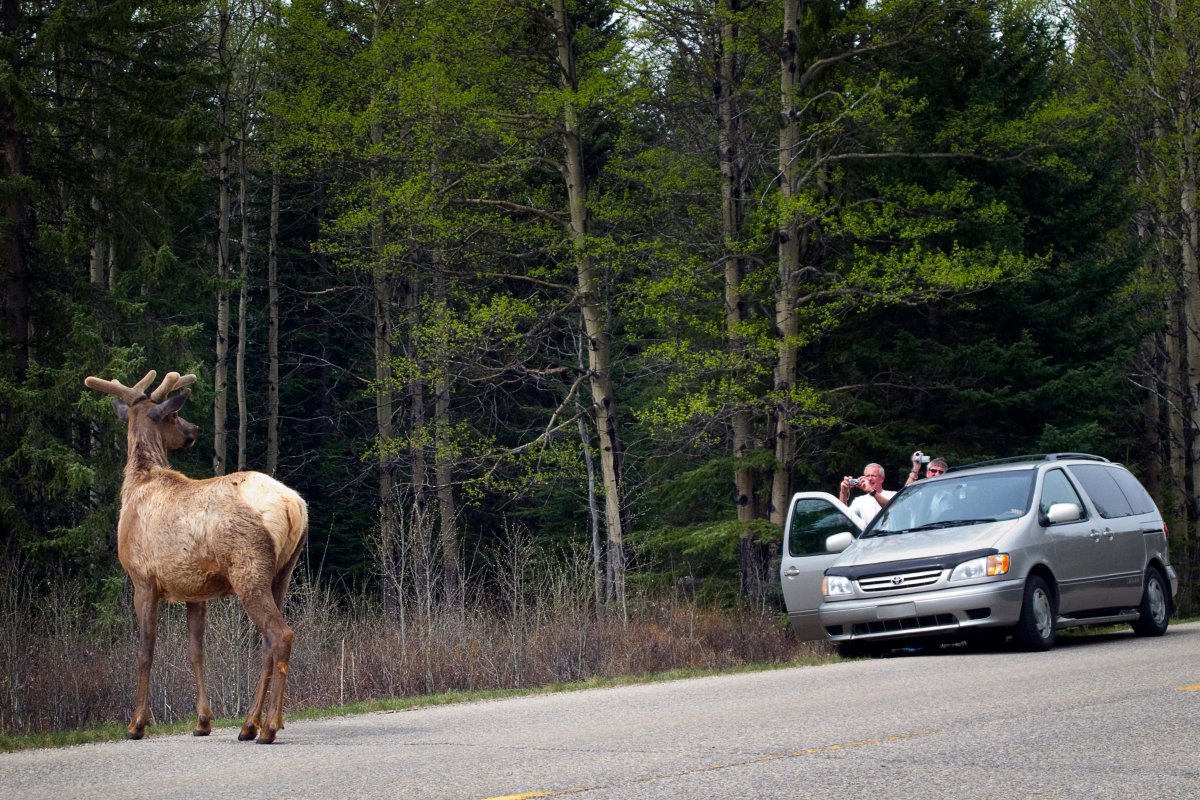With elk calving season well underway, Parks Canada has closed part of Banff National Park to allow for cow elk to give birth to and protect their calves without endangering the animals or putting people in danger.

The west slope of Tunnel Mountain south of the Tunnel Mountain Trail has been closed to all human visitors, securing that habitat area for elk to give birth to their young.
“It’s an area just east of the Banff Centre, and we often do get a lot of calving activity in and around the Banff Centre,” Bill Hunt, resource conservation manager at the national park, told The Morning News on 770 CHQR.
“It’s good habitat for elk — it’s open forest in the lower, lower valley bottom or montagne.”
Calving season begins in mid-May and continues until the end of June.

Get breaking National news
A cow elk will give birth to a single calf in a secluded thicket. Once the calf is cleaned of all scent, its spotted coat will help it survive the first three weeks of its life when it is completely defenseless. During that time, the mother will visit the calf only a few times a day, otherwise standing guard 10-15 metres away.
LISTEN: Bill Hunt joins The Morning News to discuss a closure in Banff National Park to allow for elk calving
It’s when humans come upon the mother a distance from her calf that things can get dangerous for the trespasser.
“If you try to walk around that elk, you’ll almost put yourself on a collision course with a calf,” Hunt said. “And if you watch that elk, she’ll try to act casual like nothing’s happening.
“But then you start to see body signs where she’ll either lay back her ears or lift up her nose and start showing you her teeth. And that’s just before she charges, because, as soon as you get too close to that calf, you’re going to hit a threshold where she panics and comes in.
“We’ve had people seriously injured. Elk are very aggressive with their front feet.”
Hunt advises visitors to the park stay at least 30 metres away from any elk they come across, especially during calving season.
Parks Canada also advises visitors to walk on open roads rather than forest trails and avoid lone female elk.
- Calgary’s termination of Green Line adds extra frustration for expropriated Eau Claire residents
- Calgary police searching for sexual assault suspect after attack at swimming hole
- Home ownership feels out of reach for many in Calgary
- Kananaskis council planning fireguards to protect from wildfire threat











Comments